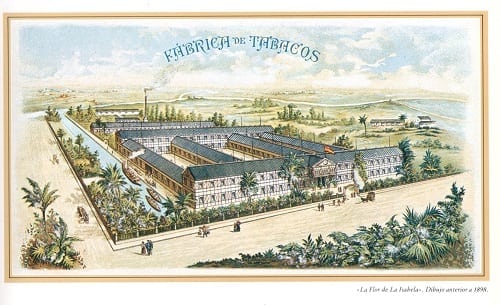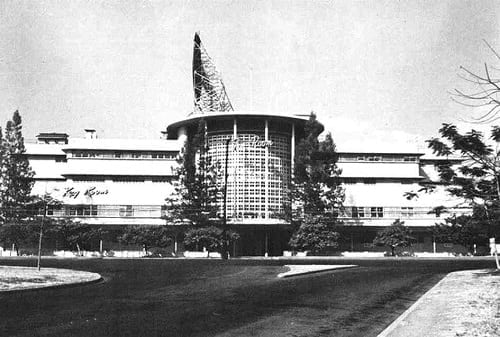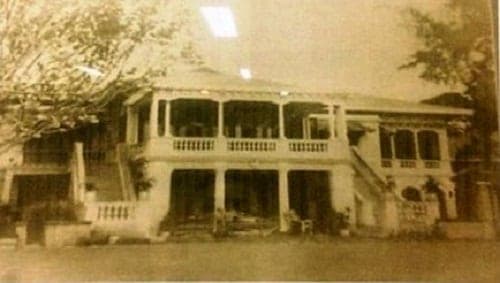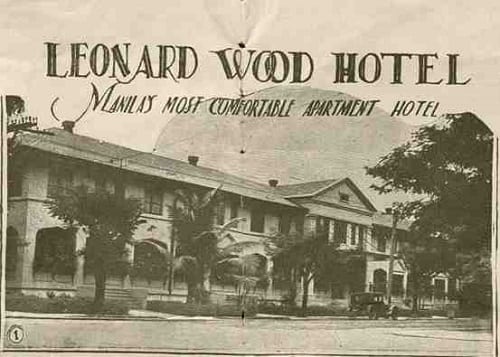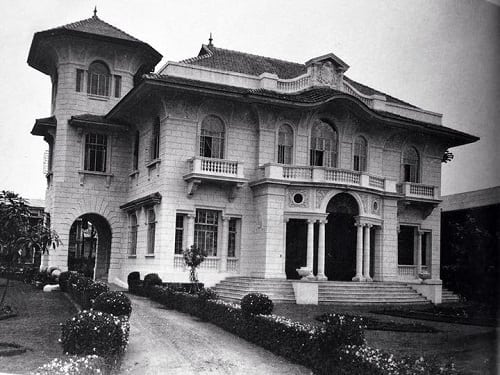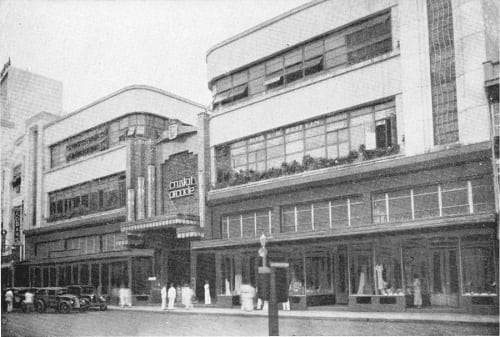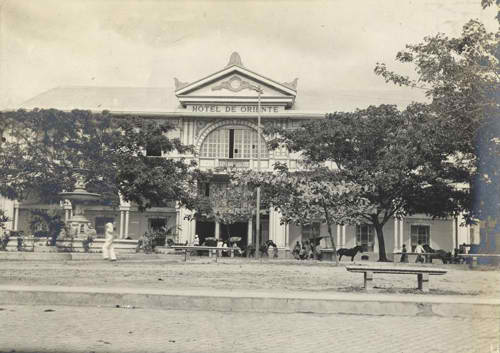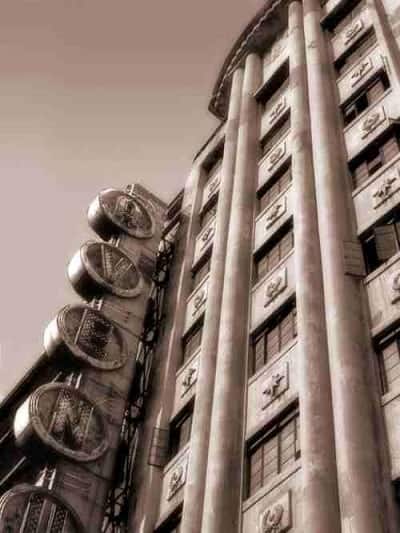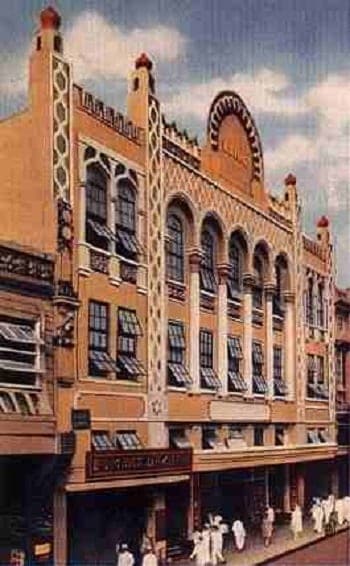20 Beautiful Old Manila Buildings That No Longer Exist
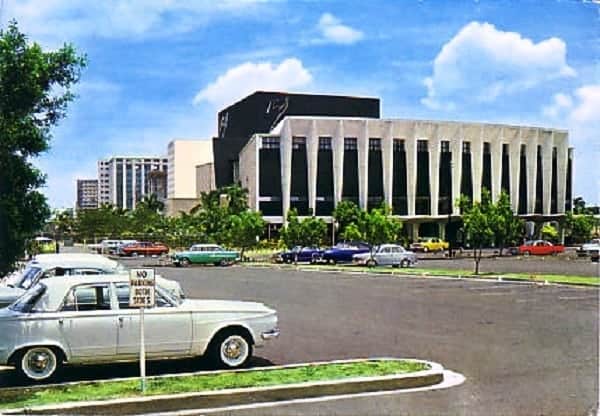
“A people’s relationship to their heritage is the same as the relationship of a child to its mother.” – John Henrik Clarke
Some ignoramuses claim that clinging to our past is useless, and giving way to technological advancements is the only way to go. I’d say a true sign of a nation’s progress is the ability of its people to preserve their cultural heritage–historical buildings included.
After all, people are judged not by the monuments they build, but by those they have destroyed.
READ: 22 Things We No Longer See in Manila
Gone are the days when Manila was known as the ‘Paris of Asia.’ Restoring the city to its former glory sounds unrealistic, but not necessarily impossible. In the meantime, let’s bask in the beauty of Manila’s old buildings that have completely vanished over the years.
1. Compañía General de Tabacos de Filipinas
Compañía General de Tabacos de Filipinas, also known by its nickname Tabacalera, was established on November 11, 1881–a few months after the abolition of the tobacco monopoly in the country.
Headed by its founder, the Marquis of Comillas Antonio Lopez y Lopez, Tabacalera was able to acquire several Spanish government-owned factories after winning a bid against British and French firms.
In 1885, Tabacalera established its flagship company, La Flor de la Isabela, at No. 851 Calle Isaac Peral (now United Nations Avenue). Named after the leaf variety found in the northern Cagayan Valley, the factory had 42 departments where thousands of employees manufactured the company’s signature blend of cigars and cigarettes.
Ten years later, Tabacalera opened its Manila office at No. 936 Calle Marques de Comillas (now Romualdez Street), between Isaac Peral (now United Nations Avenue) and Estero de Balete. At this point, the company was already known as one of the world’s largest tobacco factories offering premium cigars.
A classic Manila landmark, the Tabacalera building played a pivotal role in Philippine history. In fact, a room in the third floor of the old Tabacalera–dubbed as “Republica”–was once frequented by no less than President Manuel L. Quezon. The company also pioneered paper-making in 1918 and donated to the Philippine government, through President Ramon Magsaysay, the rare six volumes of Fr. Manuel Blanco’s Flora de Filipinas.
Sadly, the Tabacalera building was destroyed in 1945 during the Battle of Manila. Attempts to revive its former glory were futile, leading to Tabacalera’s businesses being sold off from the 1950s to the 1990s.
Today, the Tabacalera Building at Romualdez Street serves as the headquarters of Puregold, a local supermarket chain.
2. Bureau of Science Building

Designed in 1901 by American architect Edgar Bourne, this Mission-style Neoclassic building was touted as one of the best-equipped laboratory buildings in the world.
During the American Occupation, the building served as a laboratory where minerals, agricultural products, and fauna of the Philippines would be stored and studied.
Like other unfortunate Manila landmarks, the Bureau of Science Building was also destroyed during WWII. The building laid in ruins along with several irreplaceable specimens that were valuable to the scientific community.
The location of the building is now occupied by the U.P. Manila National Institutes of Health.
3. University Club Building/Apartments
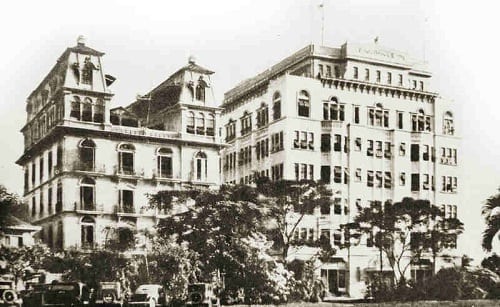
Situated just beside the majestic Luneta Hotel, the pre-war University Club Building–also known as University Club Apartments–was a neoclassic structure built some time in the early 1930s.
Operated by the nearby Luneta Hotel, the University Club Building served as a residential apartment/hotel, offering 44 rooms complete with private baths. It became home to many American families as well as servicemen.
The building survived the war and later began welcoming tourists as the Shelborne Arms Hotel. It was renamed Orient or New Orient Hotel and continued its operations until the early 1990s when it was demolished to give way to a skyscraper that is yet to be built.
4. The Jai Alai Building
Designed in the 1930s by American architect Welton Becket, the Manila Jai Alai building was one of the finest examples of Art Deco architecture in Asia.
It once stood near the old Congress building along Taft Avenue and was highly-praised as one of the most beautiful Jai Alai buildings in the world, complete with a streamline moderne facade, gaming rooms, a roof garden, bars, and an air-conditioned dining room called Sky Room.
Jai Alai games were officially launched in the building on October 17, 1940. This competitive sport which was played by Manila’s elites involves a ball being bounced off a walled space by the players using hand-held slings called cesta.
Unlike other pre-war landmarks in Manila, the Jai Alai building was able to survive the wrath of WWII, despite having served as a makeshift hospital of the U.S. Navy and later as headquarters of the Japanese Kempeitai or military secret police.
After the war, the building was reconstructed and renamed The Roosevelt Club, a Red Cross service center–said to be the largest in the world–which served thousands of soldiers on a daily basis.
The Jai Alai building started to deteriorate in the ’80s and was finally demolished in July of 2000 under the orders of then Manila Mayor Lito Atienza who said that the structure was a mere reminder of gambling.
5. The Episcopal Cathedral of St. Mary and St. John
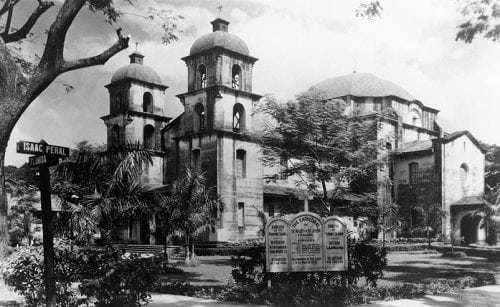
The Episcopalian Church of St. Mary and St. John was the largest Protestant church in pre-war Manila.
The construction of the cathedral was made possible by a cash gift worth $100,000 given by an anonymous donor. Another $20,000 was donated by Mr. and Mrs. George C. Thomas of Philadelphia. The stone and concrete church were erected on a property that was acquired by the Bishop in 1903. In addition to the cathedral, a Bishop’s residence was also built.
The Episcopalian Church was completed in 1907, under the rectorship of the Rev. Murray Bartlett (the first president of the University of the Philippines). Sadly, the church became one of the casualties of WWII. Its location on Isaac Peral is now occupied by the Manila Pavillion Hotel (formerly the Manila Hilton).
6. Manuel L. Quezon’s House in Roberts St., Pasay City
The house in Roberts St., Pasay City was the Quezon family’s main home, and also the first one that President Quezon owned. He would later purchase another home in Marikina as a gift to his wife, Aurora, and then a rest house in Baguio City.
The above-mentioned houses were all occupied by the Japanese who would blow them up when the American forces arrived. The Quezon house in Gilmore was the only one that survived the war because it wasn’t taken by the Japanese.
As shown in the photo above, the Roberts St. residence was a two-story house made of hardwood. It had a strip of lawn behind and a U-shaped driveway in front. It was purchased by Quezon in 1920 and in this house was born his second daughter, Nini. Prior to that, he and his wife rented a house in Lamayan in Sta. Ana, Manila.
Although the house was destroyed by the war, its ruins–now enclosed by high walls–still remain.
7. Leonard Wood Hotel
Named after a famous American Governor General, the Leonard Wood Hotel was once located at 625 Dakota Street (now Adriatico Street) in Manila. It was owned by the Kneedler Realty which also owned the Bay View Hotel.
Touted as Manila’s “most comfortable apartment hotel,” this pre-war structure had a concrete main building shaded by palms and tropical trees, well-lighted and ventilated dining area, and rooms “where the bachelor, maid, or man can have all the comforts of a home at a modest cost.”
A vintage promotional material of Leonard Wood Hotel was featured in the William Gaddis Collection. Born in 1920, Gaddis spent two years of his childhood in China and the Philippines when his father, an officer in the U.S. Navy, was assigned to command a ship in the Far East.
8. The Alfonso Zobel Mansion
Located along Dewey Boulevard (now Roxas Boulevard) cor. Calle Padre Faura in Ermita, this French Renaissance-style mansion was designed by no less than Andrés Luna de San Pedro, son of the great painter Juan Luna.
The mansion was built by Alfonso Zóbel de Ayala Roxas together with his wife, Carmen Pfitz Herrero. Alfonso is the son of Don Enrique Zóbel y de Ayala and the father of Ayala Corporation chairman emeritus Jaime Zóbel de Ayala.
Although the house survived the war in 1945, it was sold by Don Enrique to recover from the financial loss brought by WWII. The post-war mansion was occupied by the French Embassy, then by the Bank of Asia in the 1960s, and later by several antique shops.
The building finally met the wrecking ball in the 1990s, giving way to the 1322 Golden Empire Tower which now stands on the property.
9. Fabrica de Cerveza de San Miguel

Today’s San Miguel Corporation actually started in 1890 as Fabrica de Cerveza de San Miguel, with Don Enrique Maria Barretto de Ycaza y Esteban as its founder. A single proprietorship company under a Royal Grant from Spain, it was the first brewery in the country as well as in Southeast Asia.
Don Enrique converted his home along Calle Aviles in the district of San Miguel into a brewery. It served as the company’s headquarters during the past century. As shown in the photo, the brewery had a “free-standing penthouse, an open shallow caida, and a balcony.” It also had two facilities–one for the ice production and another for beer production.
In 1893, the company was incorporated with Don Pedro P. Roxas as the manager. From then on, the company’s product began to outsell other important beers in the country. The San Miguel Beer was so loved by its customers that in 1895, it won its first award at the Exposicion Regional de Filipinas as “product of highest quality.”
The turn of the twentieth century saw the company’s further expansion. It became a corporation in 1913 and a year later, began exporting its product to countries as far as Guam, Shanghai, and Hong Kong.
In 1930, San Miguel also started producing its own soft drinks products. A few decades later, the San Miguel Corporation was finally born.
Today, San Miguel Beer remains as the company’s flagship product. Their corporate head office, on the other hand, is now located at 40 San Miguel Avenue, Mandaluyong City.
10. The Insular Life Building at Plaza Moraga
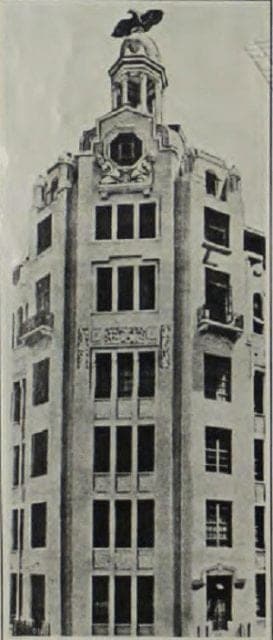
In 1930, a seven-story skyscraper in Plaza Moraga, Binondo became the third home of Insular Life, the first Filipino life insurance company in the Philippines. Prior to that, the company was headquartered in a two-room office at the Lack and Davies Building on Echague Street (now C. Palanca Sr.), and then in bigger offices at the Kneedler Building in Santa Cruz.
The Insurance Life Building was the tallest structure in pre-war Manila, back when Binondo was considered as the central business district. The towering building was made even more memorable by the eagle figure situated on its top.
It stood on a lot previously occupied by a Chinese cemetery, a fact that gave birth to several ghost stories. Despite its creepy past, the prominent structure was awarded for being the best office and commercial building of that era.
It was also in this building that the company reached several milestones. They established the Insular Life Underwriters Association–a first in the country–in 1931 and the following year, then Governor General Theodore Roosevelt, Jr. praised the company for being a “great stabilizing influence” in the Philippines.
Although the company lost 92% of its bank deposits during the war, it quickly recovered and even enjoyed steady growth from the 1950s up to the 1970s. The company previously moved in a 16-story structure in Makati but is now headquartered at the Insular Life Corporate Center in Filinvest Corporate City, Alabang, Muntinlupa City.
11. Y.M.C.A. Building
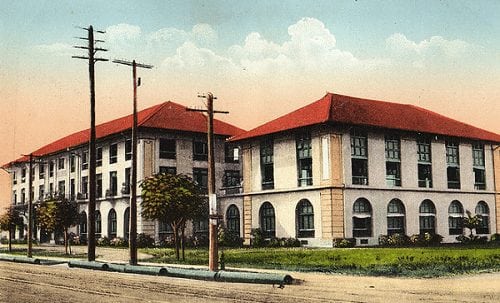
During its heyday, the Y.M.C.A. Building in Manila was the place to see and be seen. It was a social club for the rich where one could either learn how to swim or invite his foreign friends to stay. However, the purpose of this building was much deeper than that.
The Y.M.C.A. (Young Men’s Christian Association) was the brainchild of Dr. John R. Moll who envisioned it in 1907 as an association that would serve young American and European men.
In the Philippines, the organization started on November 10, 1911, and soon launched a recreation program for the benefit of the Filipino youth. Some prominent public servants also collaborated with the organization, including Sen. Gil Puyat and Justice Jose Abad Santos among others.
The Y.M.C.A. Building once stood on a 35, 000 sq. m. land originally bounded by Arroceros, San Marcelino, and Concepcion Streets in Ermita. Two of the buildings (see photo above) were destroyed during the war, while those that had been partially razed served as quarters for wounded soldiers and Death March prisoners.
The land is now occupied by SM Manila, just behind the Manila City Hall.
12. The Crystal Arcade
Another architectural masterpiece of Andres Luna de San Pedro, The Crystal Arcade in Escolta was inaugurated on June 1, 1932. It housed the Manila Stock Exchange as well as the Marina Rae’s Candies. People visited this place both for the prestige and its air-conditioning which was a first in the country.
With its fine art deco lines, the Crystal Arcade was arguably the most modern pre-war building in the country. In fact, it was the first shopping mall in Manila to feature a “walkway leading to the glass-walled shops on the first floor.”
The Crystal Arcade was also the place where the Bureau of Commerce (and Industry) held in 1932 the first ever exposition of products made in the Philippines.
Sadly, the building was one of the casualties of WWII. It was reconstructed but it all went downhill from there. Eventually, the Crystal Arcade was demolished in 1966 and replaced by Philippine National Bank head office.
13. Hotel de Oriente
Hotel de Oriente in Binondo was famous for two reasons: It was considered as the first luxury hotel in Manila and no less than our national hero, Jose Rizal, stayed in Room 22 at this hotel when he arrived in the Philippines from Hong Kong on June 26, 1892.
Built in 1889 by Don Manuel Perez Marquet, Hotel de Oriente stood on a lot previously occupied by Fabrica de Puros. It was designed by a Spanish architect named Juan Jose Huervas y Arizmendi and had a total of three floors with 83 rooms, complete with ceiling fans and electricity.
The location of Hotel de Oriente at Plaza Calderon de la Barca (now Plaza Lorenzo Ruiz) was also strategic as it stood next to La Insular Cigar and Cigarette Factory, several Chinese retail businesses as well as Intramuros and Escolta.
Before it was destroyed by the war, Hotel de Oriente served as the office of the Philippine Constabulary. It later became the home of American Circulating Library, Official Gazette, and the Commercial Museum.
The lot where the hotel once stood is now occupied by Metrobank.
14. La Insular Cigar and Cigarette Factory
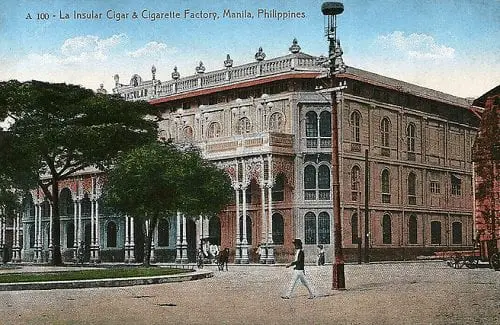
La Insular was one of the companies established after the abolition of the tobacco monopoly in the Philippines. Located in Binondo right next to Hotel de Oriente, the factory easily stood out due to its Neo-Mudéjar style of architecture.
Just like the neighboring structure, La Insular’s factory was also designed by Juan Jose Huervas y Arizmendi, then municipal architect of Manila. The factory had “tall archways and projecting balconies” adorned with “intricate lampposts.“
Established in 1883 by Don Joaquín Santamarina and Don Luis Elizalde, La Insular slowly climbed to prominence, with most of its products being exported to countries as far as Spain and England. In fact, one of its loyal customers was no less than King Alfonso XIII of Spain whom a La Insular cigar was named after.
Both the factory and Hotel de Oriente were engulfed by fire during the Liberation of Manila in 1944. Its former location is now occupied by Metrobank Binondo.
15. Avenue Theater
Built in Art Deco style, the Avenue Theater in Rizal Avenue (Avenida) was once the venue for vaudeville acts and American movie premieres during the 1930s and 1940s. It was a masterpiece of Juan Nakpil who became the National Artist for Architecture.
The theater had 1,000 seating capacity and a grand lobby treated with a marble finish flooring. Aside from the theater, the building also had an office and hotel space. After the war, the Avenue Theater was renovated and had since become the venue for several live performances.
Unfortunately, the theater closed in 1997 and was eventually demolished in 2006 to make way for a parking lot. The site is now occupied by Padi’s Point.
16. Rizal Theater

Another structure designed by National Artist Juan Nakpil, the Rizal Theater in Makati was originally intended as part of the Rizal Memorial Cultural Complex. The latter was set to be completed on June 19, 1961, but lack of funds got in the way of its construction.
The Rizal Theater was a film and performance venue with its balcony, loge, and orchestra sections forming one ascending curve. It had Rizal’s signature on its fly tower and also housed a restaurant and coffee shop called Leila’s.
The theater had become the favorite destination of residents from exclusive subdivisions for over three decades before it was demolished towards the end of the 20th century.
The site is now occupied by the five-star Makati Shang-ri La Hotel.
17. The original Lyric Theater
The Lyric Theater of the 1920s had a unique Moorish design, setting it apart from its rival Capitol Theater which stood two buildings away. With 1,600 seating capacity, the Lyric Theater was designed by National Artist Pablo Antonio, the same architect behind Galaxy, Ideal, Life, and Scala theaters.
According to José Victor Torres’ Manila: Studies in Urban Cultures and Traditions, the original Lyric Theater was purchased by the Tuason family from the Peoples Bank and Trust Company in 1939. It was previously owned by Frank Goulette whose death in 1933 led the Eastern Theatrical Inc. to take over the rights.
The pre-war Lyric Theater was home to many firsts in Philippine cinema. It was the venue for the premiere of several legendary Filipino films such as Tia Juana, the only movie shown in Manila in 1943 during Japanese Occupation, and Eduardo de Castro’s Zamboanga, described by Hollywood director Frank Capra as “the most exciting and beautiful picture of native life I have ever seen.”
It was also in Lyric Theater where Disney’s first full-length animated feature, “Snow White and the Seven Dwarfs,” premiered on May 1, 1938. The country’s first sound film, Jose Nepomuceno’s Punyal na Guinto (Golden Dagger) also premiered at Lyric on March 9, 1933.
Some sources, however, claim that “Ang Aswang”–also released in Lyric Theater—was the country’s first talkie (it premiered on January 1, 1933).
The original Lyric Theater was remodeled twice (1927 and 1937) before it was finally destroyed during the Liberation of Manila in 1945.
18. The Magallanes Theater
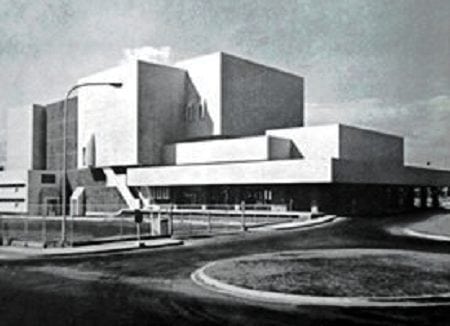
Once a popular alternative to the Rizal Theater, this landmark was a venue for movie premieres and also housed the Pancake House restaurant from the 1970s up to the 1980s.
The theater–designed by Carlos Arguelles–was located at the corner of EDSA at the Magallanes Interchange. It had a modernist blocky-“brutalist” massing reminiscent of the CCP. In contrast, the Rizal Theater had an international style massing that was popular during the ’50s.
Just like other unfortunate landmarks in Manila, the Magallanes Theater also met the wrecking ball in the early 1990s.
19. The Insular Ice Plant and Cold Storage
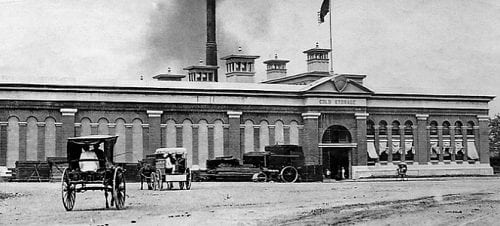
In 1902, architect Edgar K. Bourne was hired by the U.S. government to design one of the first permanent buildings built by the Americans in their new colony: The Insular Ice Plant and Cold Storage.
The brick structure was built at the southern foot of the Puente de Colgante. It had a Mission Revivalist style, complete with a ten-story-high smokestack that became a landmark in Manila at that time. The construction cost the American government an astounding $1,000,000 or P2,000,000.
The Insular Ice Plant and Cold Storage were built by the U.S. to supply American troops as well as the general public with ice, distilled water, and cold storage.
Heavily damaged by the war, the building was finally demolished in the late 1970s or early 1980s to make way to the construction of the Light Rail Transit (LRT Line 1).
20. La Germinal Cigar and Cigarette Factory
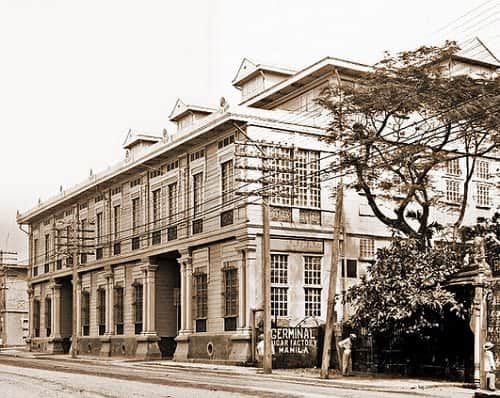
The Germinal Cigar Factory once stood at Calle Marques de Comillas in San Miguel, Manila, next to the Ayala Bridge. During its heyday, the company was considered the “largest establishment of its kind.”
According to an article published in the Manila Times, the Germinal Cigar Factory had 35 cigarette machines on its second floor, each of which only required a single employee to operate.
To keep up with the voluminous orders coming from the Philippines as well as Japan, China, and Australia, the factory had to produce as much as 3,000,000 cigarettes and 200,000 cigars a day.
The company, also one of the major sponsors of the first Manila Carnival, had Dr. Ariston Bautista y Lin as its president. Lin also served as the head of the Philippine Medical Society as well as executive of several charitable organizations in the county.
References
Alcazaren, P. (2005). Manila landmarks of the 30s. [online] philSTAR.com. Available at: http://goo.gl/wBjWgV [Accessed 14 Oct. 2014].
Alcazaren, P. (2011). Maranaw memories. [online] philSTAR.com. Available at: http://goo.gl/ob4CQ4 [Accessed 16 Oct. 2014].
Arquitectura Manila, (2014). A.M. Shorts: Alfonso Zóbel and Carmen Pfitz Residence. [online] Available at: http://goo.gl/0RRG5U [Accessed 14 Oct. 2014].
Arquitectura Manila, (n.d.). Buildings. [online] Available at: http://goo.gl/szZp4n [Accessed 16 Oct. 2014].
Bautista, A. (n.d.). History of Philippine Cinema. [online] National Commission for Culture and the Arts. Available at: http://goo.gl/ytRBLq [Accessed 16 Oct. 2014].
De la Torre, V. (1981). Landmarks of Manila, 1571-1930. 1st ed. Makati: Filipinas Foundation, Inc.
de Manila, Q. (1961). Nonong Quezon’s life with father. Philippines Free Press. [online] Available at: http://goo.gl/1zReeU [Accessed 14 Oct. 2014].
Gopal, L. (2012). The Jai Alai Building, a beautiful example of Art Deco in Asia.. [online] Manila Nostalgia. Available at: http://goo.gl/kHsMZU [Accessed 14 Oct. 2014].
Handbooks on the Missions of the Episcopal Church. (1923). 1st ed. New York: National Council of the Protestant Episcopal Church Department of Missions.
Hedman, E. and Sidel, J. (2005). Philippine Politics and Society in the Twentieth Century: Colonial Legacies, Post-Colonial Trajectories. 1st ed. Routledge.
Ingles, R. (2008). 1908: The Way it Really was : Historical Journal for the UP Centennial, 1908-2008. 1st ed. UP Press.
Lo, R. (2014). The many ‘firsts’ in Phl cinema. [online] philSTAR.com. Available at: http://goo.gl/bMEVOc [Accessed 16 Oct. 2014].
Sahakian, M. (2014). Keeping Cool in Southeast Asia: Energy Consumption and Urban Air-Conditioning. 1st ed. Palgrave Macmillan.
Sison, N. (2011). Tabacalera: 130 years of cigars and Philippine history. [online] philSTAR.com. Available at: http://goo.gl/WjQyTx [Accessed 14 Oct. 2014].
Worcester, D. (1914). The Philippines: Past and Present (Volume 1). 1st ed. New York: The MacMillan Company.
FilipiKnow
FilipiKnow strives to ensure each article published on this website is as accurate and reliable as possible. We invite you, our reader, to take part in our mission to provide free, high-quality information for every Juan. If you think this article needs improvement, or if you have suggestions on how we can better achieve our goals, let us know by sending a message to admin at filipiknow dot net
Copyright Notice
All materials contained on this site are protected by the Republic of the Philippines copyright law and may not be reproduced, distributed, transmitted, displayed, published, or broadcast without the prior written permission of filipiknow.net or in the case of third party materials, the owner of that content. You may not alter or remove any trademark, copyright, or other notice from copies of the content. Be warned that we have already reported and helped terminate several websites and YouTube channels for blatantly stealing our content. If you wish to use filipiknow.net content for commercial purposes, such as for content syndication, etc., please contact us at legal(at)filipiknow(dot)net
